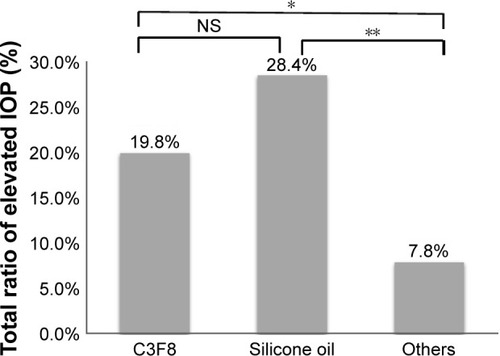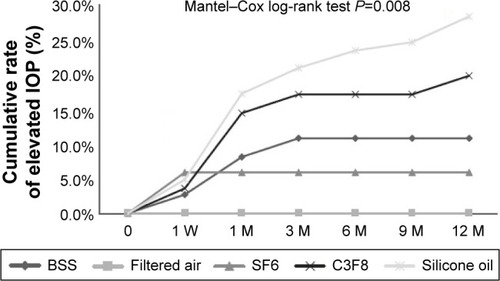Figures & data
Table 1 Demographics of the study population
Table 2 Intraoperative characteristics of patients with and without elevated IOP
Figure 1 Comparison of the total proportion of eyes with elevated IOP among the different tamponade groups.
Abbreviations: SF6, sulfur hexafluoride; C3F8, perfluoropropane; BSS, balanced salt solution; IOP, intraocular pressure; NS, not significant.

Figure 2 Survival analysis of elevated IOP according to the type of tamponade used in PPV.
Abbreviations: SF6, sulfur hexafluoride; C3F8, perfluoropropane; BSS, balanced salt solution; IOP, intraocular pressure; M, month; PPV, pars plana vitrectomy; W, week.

Table 3 Number of eyes with elevated IOP according to tampon-ade type and time of onset
Table 4 Treatment outcomes of IOP elevation according to tamponade type
Table 5 Outcomes of surgical procedures for the control of IOP
